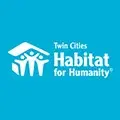Your Journey to Homeownership with Twin Cities Habitat
Dreaming of your own home with a yard, open kitchen, or a garage for your car? Twin Cities Habitat for Humanity's Homeownership Program can help turn...
4 min read
 Twin Cities Habitat for Humanity
:
5:21 PM on November 13, 2024
Twin Cities Habitat for Humanity
:
5:21 PM on November 13, 2024
.webp)
Buying a home can be an exciting experience–and a confusing one.
As you learn how to buy your first home, you might feel like you’re also learning a new language: the language of real estate. There are many legal, financial, and real estate terms you’ll need to understand.
That confusion can also extend to the home-searching process. Photos in a home listing can tell you something, but they’re usually combined with unfamiliar words and acronyms. Home listings are short, so realtors often use abbreviations to include as much information as possible.
Choosing the right home requires understanding some key listing terms and their usual abbreviations.
Each home listing should provide the following information:
With this information, you can evaluate the home’s neighborhood and its proximity to your work, schools, shopping, etc. You can also see if the home and property are big enough for your needs and if the price fits your budget. If so, you will want to know more!
The listing may also describe specific features of the home and property:
You may also see words that describe the condition of the home or refer to other important information about the property:
The home listing’s status will tell you if it’s currently on the market or if another buyer has claim to it. It may also include information about the seller’s motivation and any financial contingencies:
If you're participating in Twin Cities Habitat's Homeownership Program, you may have viewed our Property Listings page, which outlines the Habitat-developed and open market homes available. We use a few terms that are specific to our program:
As you begin to search home listings, make sure to list all the features you want to look for using these three categories:
If the home listing includes anything on your #3 list, consider rejecting it. If the listing includes everything on your #1 list, it might be the one for you.
Learning how to buy your first home can feel daunting. However, the more you understand the process and the language of real estate, the smarter you’ll be as a buyer–-and the happier you will be with the first home that is truly yours!
If you’re navigating the homebuying process for the first time, check out our First-Time Homebuyer Guide for guidance on proper preparation and knowledge of what you can afford.
Your gift unlocks bright futures! Donate now to create, preserve, and promote affordable homeownership in the Twin Cities.

Dreaming of your own home with a yard, open kitchen, or a garage for your car? Twin Cities Habitat for Humanity's Homeownership Program can help turn...

Owning a home is a significant goal for many people. It’s a big step–the biggest single investment most people will ever make. Understanding how to...

Buying your first home is an exciting journey, but it can also be overwhelming. To help you navigate the process smoothly, we've compiled a list of...